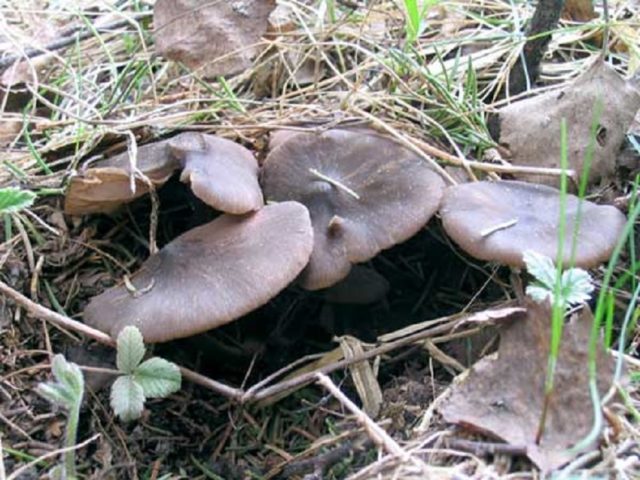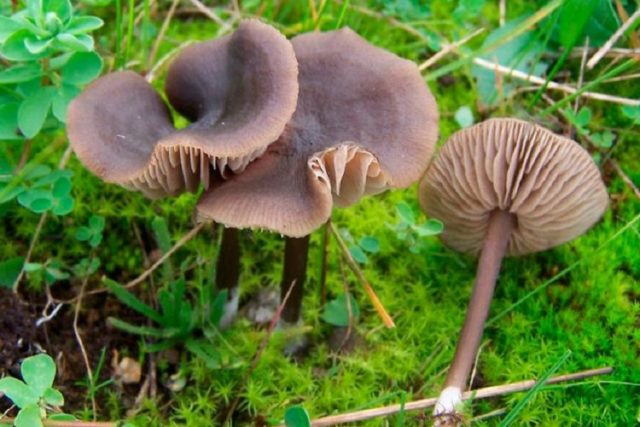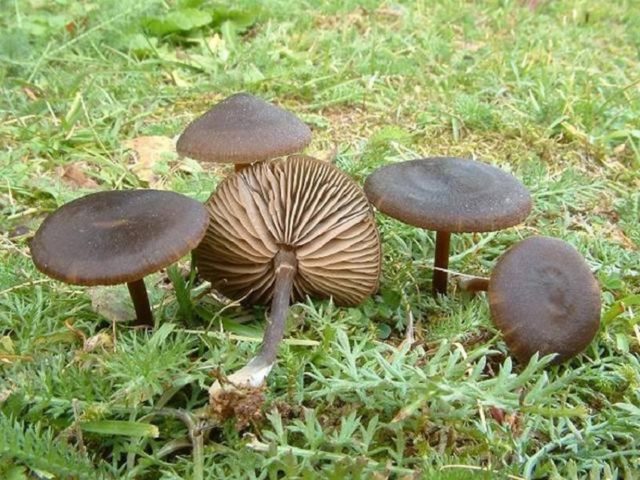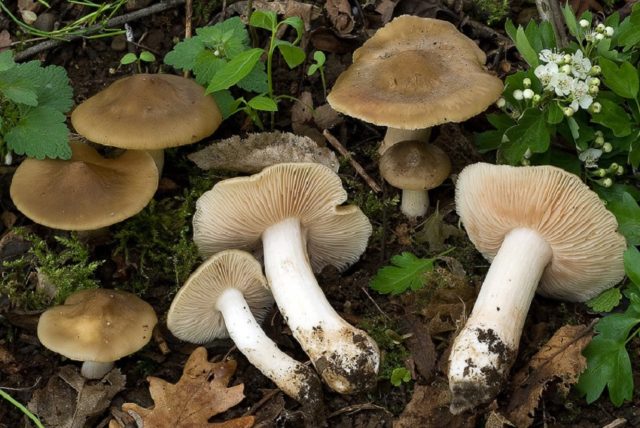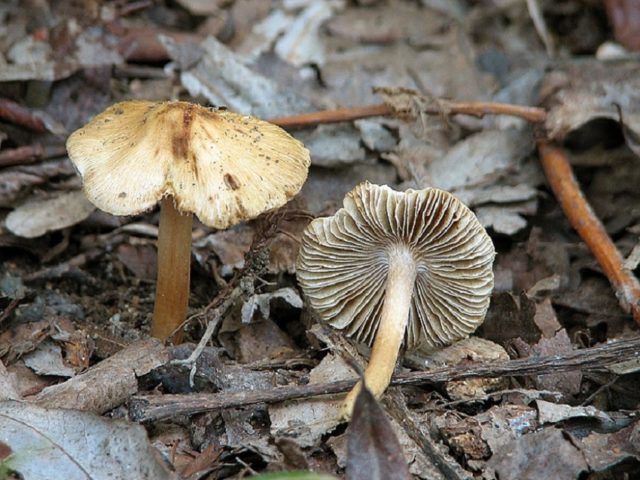Content
Entoloma vernum is one of 40 species of the Entoloma family of the Entoloma genus. It has a second name, Spring rose-plate.
The name determines the time of growth of fruit bodies - early spring or the first days of summer. Entoloma has a short life span, so it is impossible to meet the mushroom at other times of the year.
Description of Entoloma of Spring
The characteristics of the appearance of the mushroom must be known. A description of each part and a photo of the spring entoloma will be of great help in this.
Description of the hat
The mushroom cap is difficult to confuse with other species. It has a characteristic conical shape with a small tubercle located in the center.
It has no permanent coloration, the color varies from gray to black-brown, sometimes with a tint of olive. The diameter of the cap is not more than 5-6 cm. In young enthola, the edge of the cap is tucked up.
The pulp is either white or brownish in color, has no taste or smell.
The plates are attached to the pedicle or are loose, wavy, wide. Initially, a pale gray color, then become with a reddish tint. Spore powder pink.
Leg description
The stem of the Entoloma fungus is spring fibrous, slightly thickened near the base. It can be lighter than the cap or one tone. The length of the leg is 3-8 cm, diameter is 0.3-0.5 cm. In old specimens it reaches a thickness of 1 cm. There is no ring.
Is the mushroom edible or not
Scientists from different countries claim that Entoloma is poisonous in spring. The fruiting body contains toxins that disrupt the activity of the nervous system. Symptoms of poisoning are noticeable 30 minutes after using Entoloma.
Where and how it grows
Prefers sandy soil, Entoloma can often be found on forest edges, where there is coniferous litter. Less often in the depths of the forest. They grow in groups of 3-5.
The growing region is very large - throughout the territory of the Russian Federation, up to the regions of the Far East.
Doubles and their differences
On the outside, the spring can be confused with the Silky Entoloma (Entolomasericeum).
But this species is very rare, almost never found in the regions of Russia. It is considered a conditionally edible mushroom. The main difference is the growth time. The mushroom appears in August and grows until the end of September, when the spring one can no longer be found. Therefore, you can only make a mistake without having information about the species.
The second double is Entoloma clypeatum.
Edible mushroom, fruiting from mid-May to September. Prefers mixed or deciduous forests, orchards. Outwardly, it is very similar to the spring one. Therefore, lovers of this mushroom should be careful. The species grow at the same time, almost do not differ in appearance. Sadovaya is characterized by a weak flour smell.
Fibrous fiber (Inocyberimosa) can also be confused unknowingly.
The difference lies in the color of the mushroom and the plates (slightly red). The species is poisonous, with very unappetizing data. Reminiscent of a toadstool.Thanks to this, lovers of "quiet hunting" bypass the fiber-optic unit.
A visual video to well remember the appearance of the mushroom:
Conclusion
Spring entoloma has a limited fruiting period and a very unappetizing appearance. Having met a copy that matches the description and photo, it is better to bypass it.
